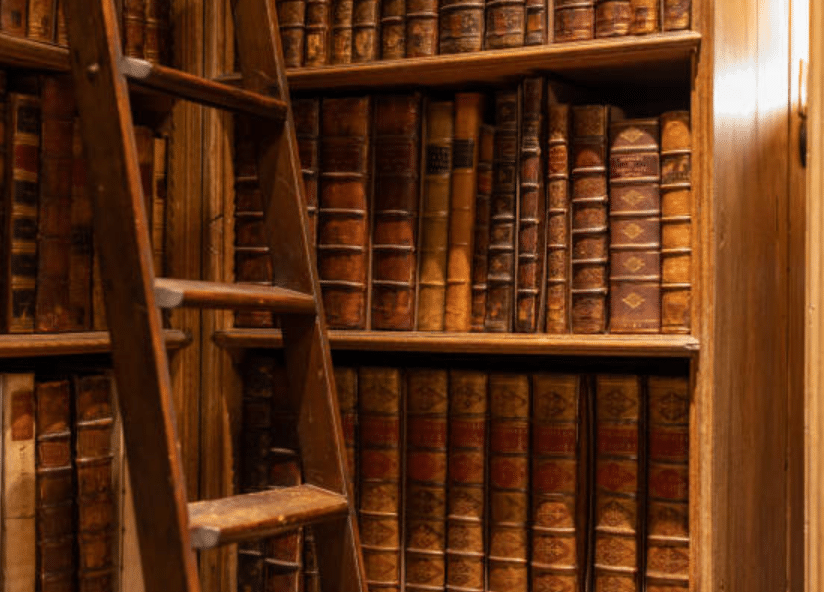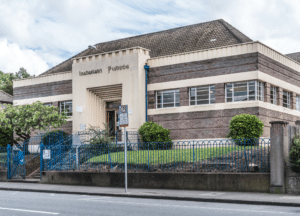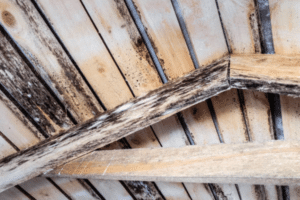Libraries are treasure troves of knowledge, but they are also susceptible to mould damage.
Mould is a type of fungus that can grow on a variety of materials, including paper, cardboard, and leather. It can cause irreversible damage to books and other library materials.
In this blog, we’ll look into how mould damage in libraries can pose a significant threat to both the preservation of books and the health and safety of library visitors and staff.
Learn how crucial it is to take proactive measures and regularly inspect library spaces to prevent the growth of mould.
Key Takeaways:
- Mould damage in libraries can have detrimental effects on books and pose health hazards.
- Preventive measures, such as maintaining proper humidity levels and implementing regular cleaning routines, are essential for mould prevention in libraries.
- Professional mould inspection and remediation services provide expertise in identifying and treating mould issues effectively.
- The case of Inchicore Library in Dublin highlights the urgent need for restoration efforts to protect the building and its valuable literary collections.
- AirFresh Mould Removal London offers expert solutions for mould removal in libraries, preserving books, and ensuring health safety.
Statistics on Mould in UK Libraries
According to a 2019 survey by the Chartered Institute of Library and Information Professionals (CILIP) found that 84% of UK libraries had experienced mould growth in the previous year. The survey also found that the most common areas for mould growth were in book collections, basements, and storage areas.
The 2017 study by the University of Birmingham found that people who worked in libraries with high levels of mould exposure were more likely to report respiratory problems, such as wheezing and coughing. The study also found that mould exposure was associated with increased absenteeism from work.
In a 2018 study by the British Library found that mould can cause significant damage to paper-based materials, even at low levels of exposure. The study found that mould can weaken paper fibres, leading to tears and breaks. It can also cause paper to become discoloured and brittle.
Understanding the Impact of Mould Damage in Libraries
Mould damage in libraries can lead to irreversible harm to book collections, compromising their historical value and making them unreadable. The presence of mould poses a serious threat to the preservation of books, as it accelerates their deterioration and can result in irreparable damage.
When mould begins to grow on books, it feeds on the organic materials such as paper, leather, and glue, causing them to break down.
This leads to disintegration, staining, and warping of the pages, making it difficult or even impossible to read the text. Once mould takes hold, it can rapidly spread throughout the library, affecting other books and documents.
To prevent mould damage in libraries, it is crucial to implement effective mould remediation measures. This includes regular inspections to identify and address any signs of mould growth, as well as implementing preventive measures to control humidity levels and improve ventilation.
By taking proactive steps to prevent mould, libraries can ensure the long-term preservation of their valuable collections.
| Mould Damage in Libraries | Preventing Mould Damage in Libraries | Mould Remediation in Libraries |
|---|---|---|
| Accelerates deterioration of books | Regular inspections and preventive measures | Effective removal of mould growth |
| Compromises historical value | Control humidity levels and improve ventilation | Ensure long-term preservation of collections |
| Makes books unreadable | Identify and address signs of mould growth | Prevent further spread of mould |
By understanding the impact of mould damage in libraries and taking proactive measures to prevent its growth, libraries can protect their valuable collections and ensure that future generations can continue to benefit from the knowledge and history contained within these books.
Preventing Mould Growth in Libraries: Best Practices
To combat mould growth and prevent damage in libraries, it is essential to follow a set of mould prevention guidelines and best practices.
By implementing these measures, libraries can ensure the preservation of books and maintain a healthy environment for visitors. Here are some key steps to consider:
Promote Proper Ventilation
Good airflow is crucial for preventing mould growth. Ensure that library spaces are well-ventilated by opening windows and using fans or air conditioning systems.
This helps to control humidity levels and reduce the risk of moisture buildup, which can lead to mould formation.
Maintain Optimal Humidity Levels
Humidity plays a significant role in mould growth. It is important to keep humidity levels in libraries below 50%.
Consider using dehumidifiers in areas prone to moisture, such as basements or storage rooms. Regularly monitor humidity levels using a hygrometer to ensure they remain within the recommended range.
Implement Regular Cleaning and Inspection Routines
Regular cleaning and inspection are essential for early detection and prevention of mould. Develop a cleaning schedule that includes dusting, vacuuming, and wiping surfaces with mould-inhibiting cleaners.
Pay extra attention to areas with higher moisture levels, such as bathrooms or areas with water leakage.
Additionally, conduct regular mould inspections to identify any signs of growth and address them promptly.
Properly Store and Handle Books
Proper book storage and handling practices can help prevent mould damage.
Ensure that books are stored in dry, well-ventilated areas, away from damp walls or floors. Avoid placing books directly on the floor or against exterior walls.
Use bookshelves made of materials that do not retain moisture, such as metal or plastic. Additionally, handle books with clean, dry hands to avoid transferring moisture or contaminants.
Maintain a Comprehensive Disaster Plan
Having a comprehensive disaster plan in place is crucial for dealing with potential mould outbreaks and other emergencies.
This plan should include procedures for responding to water leaks, floods, or other incidents that may increase the risk of mould growth.
It should outline steps for drying affected areas, removing moisture sources, and consulting professional mould remediation services when necessary.
| Mould Prevention Guidelines: |
|---|
| Promote proper ventilation in library spaces by using fans or air conditioning systems. |
| Maintain humidity levels below 50% by using dehumidifiers and regularly monitoring with a hygrometer. |
| Follow a regular cleaning schedule and use mould-inhibiting cleaners. |
| Store books in dry, well-ventilated areas and handle them with clean, dry hands. |
| Develop a comprehensive disaster plan for addressing potential mould outbreaks and other emergencies. |
Importance of Professional Mould Inspection and Remediation Services
When faced with mould damage in libraries, it is crucial to engage the services of professional mould specialists for thorough inspection and effective remediation.
Mould growth not only poses a threat to the structural integrity of the library building but also presents health risks to staff and visitors.
Professional mould inspection services are essential to identify the extent of the mould damage and determine the underlying causes.
Experts in mould remediation have the knowledge and expertise to carry out comprehensive assessments, utilising specialised equipment to detect hidden mould growth and moisture sources.
After conducting a thorough inspection, mould specialists develop a tailored remediation plan to address the specific mould issues in libraries.
This may include implementing containment measures to prevent the spread of mould spores, removing affected materials, and applying safe and effective mould removal techniques.
Benefits of Professional Mould Inspection and Remediation Services:
- Accurate assessment of mould damage and identification of underlying causes
- Prevention of mould spore dispersion during the remediation process
- Safe removal and disposal of mould-contaminated materials
- Application of effective mould remediation techniques
- Expertise in restoring the structural integrity of the library building
- Ensuring the health and safety of library staff and visitors
| Mould Inspection in Libraries: | Professional mould inspection services are essential to identify the extent of the mould damage and determine the underlying causes. Experts in mould remediation have the knowledge and expertise to carry out comprehensive assessments, utilizing specialised equipment to detect hidden mould growth and moisture sources. |
|---|---|
| Mould Remediation in Libraries: | After conducting a thorough inspection, mould specialists develop a tailored remediation plan to address the specific mould issues in libraries. This may include implementing containment measures to prevent the spread of mould spores, removing affected materials, and applying safe and effective mould removal techniques. |
The Case of Inchicore Library: A Call for Urgent Restoration
The Inchicore Library in Dublin is facing severe challenges, including extensive mould damage, dampness, and critical structural flaws that demand immediate attention and restoration.
A recent engineer’s report commissioned by Dublin City Council has identified 39 critical flaws in the historic library building that need urgent remediation.
The report highlights the pressing need to address issues such as mould growth, dampness, fire safety breaches, loose brickwork, and cracked walls.
These problems not only threaten the structural integrity of the building but also pose risks to the valuable literary collections housed within.
The library, being a protected structure, requires meticulous restoration efforts to ensure its preservation for future generations.
To tackle the mould damage, damp-proofing the building is crucial. This involves implementing measures to control humidity levels and prevent moisture buildup, which are conducive to mould growth.
Additionally, regular heating should be maintained to keep the library environment dry and inhospitable to mould spores.
Addressing fire safety breaches and removing asbestos are also essential steps in the restoration process. These measures will not only improve the safety of the building but also contribute to its long-term preservation and usability.
The community is calling upon Dublin City Council to develop an urgent plan to restore and repurpose the Inchicore Library, safeguarding its historical significance and ensuring it remains a valuable resource for the local community.
| Challenges Faced by Inchicore Library: | Recommended Restoration Measures: |
|---|---|
| Extensive mould damage | Damp-proofing the building, controlling humidity, regular heating |
| Dampness | Addressing moisture issues, preventing further water ingress |
| Critical structural flaws | Repairing loose brickwork, addressing cracked walls |
| Fire safety breaches | Improving fire safety measures, ensuring compliance |
| Asbestos removal | Eliminating hazardous materials, ensuring a safe environment |
AirFresh Mould Removal London: Your Expert Solution
For mould removal in libraries, AirFresh Mould Removal London is your trusted and expert service provider, dedicated to preserving books and ensuring health safety.
With our professional services and expertise, we have helped numerous libraries combat mould damage and create a clean and safe environment for their collections and visitors.
Why Choose AirFresh Mould Removal London?
- We specialise in mould removal, using advanced techniques and equipment to eliminate mould growth effectively.
- Our team of experienced mould experts has extensive knowledge in dealing with various types of mould infestations.
- We understand the importance of preserving books and other valuable materials, and we take extra care to ensure their protection during the mould removal process.
- Safety is our top priority. We follow industry standards and regulations to safeguard the health and well-being of library staff and visitors.
“AirFresh Mould Removal London has transformed our library. Their prompt and efficient service helped us eradicate mould and prevent further damage to our books. Highly recommended!” – London Librarian
When you choose AirFresh Mould Removal London, you can have peace of mind knowing that your library is in expert hands.
We offer tailored solutions to meet your specific needs, whether you require mould inspection, remediation, or ongoing maintenance services.
To learn more about our mould cleaning services or to schedule a consultation, contact AirFresh Mould Removal London today.
Don’t let mould damage compromise the integrity of your library collection or the health of your visitors. Trust the experts to keep your library mould-free and safe.
| Benefits of AirFresh Mould Removal London | Our Services |
|---|---|
|
|
Conclusion
Safeguarding books and maintaining health safety in libraries necessitates a proactive approach, regular inspections, and the involvement of professional mould removal services.
Mould damage in libraries can have severe consequences, ranging from the deterioration of valuable books to potential health hazards posed by mould spores.
Understanding the impact of mould damage is crucial in implementing preventive measures. Dampness, fire safety hazards, loose brickwork, and cracked walls, as seen in the case of the old library building in Inchicore, Dublin, can lead to further deterioration.
The recent engineer’s report commissioned by Dublin City Council identified 39 critical flaws that require immediate attention, including damp-proofing, heating maintenance, addressing fire safety breaches, and asbestos removal.
To prevent mould growth in libraries, it is essential to adhere to best practices. Maintaining proper humidity levels, implementing regular cleaning and inspection routines, and promoting proper ventilation are effective measures.
However, professional assistance is paramount in ensuring thorough mould inspection and remediation services, especially in older library buildings.
The urgent need for restoration efforts, as highlighted in the case of Inchicore Library, calls for immediate action from Dublin City Council.
The COVID-19 pandemic has delayed refurbishment works, leaving the historic library building unheated and vulnerable to further damage.
Regular checks and maintenance are required to prevent further deterioration and protect the valuable literary collections housed within.
FAQ
Q: What are the major issues with the old library building in Inchicore, Dublin?
A: The old library building in Inchicore, Dublin is plagued with major issues such as mould, dampness, fire safety hazards, loose brickwork, and cracked walls.
Q: How many critical flaws were identified in the engineer’s report?
A: A recent engineer’s report commissioned by Dublin City Council identified 39 critical flaws that need immediate attention.
Q: What are the recommendations of the engineer’s report for the old library building?
A: The report recommends damp-proofing the building, regularly switching on the heating, addressing fire safety breaches, and removing asbestos.
Q: What is the responsibility of Dublin City Council regarding protected structures?
A: Dublin City Council has a responsibility to maintain protected structures, including the old library building in Inchicore, Dublin.
Q: Why have the refurbishment works been delayed?
A: The refurbishment works have been delayed due to Covid-19, and the building has been left unheated and vulnerable to further damage.
Q: What is needed to prevent further deterioration of the historic library building?
A: Regular checks and maintenance are needed to prevent further deterioration of the historic library building in Inchicore, Dublin.
Mould can be a serious problem in libraries, damaging books and posing a health risk to patrons and staff. Never attempt to remove mould yourself as mould spores can be easily inhaled.
Get in touch with a professional mould removal in libraries. Call us at 0203 130 4068.





